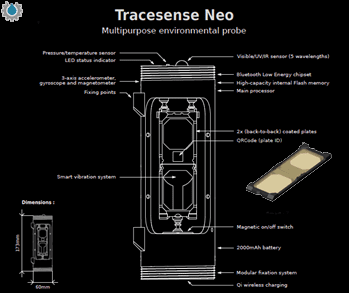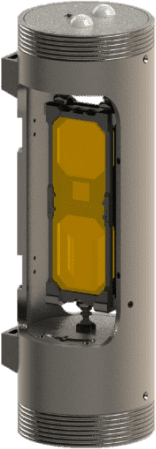The French National Research Institute for Development (IRD) has developed a water pollution sensor for the wild using Formlabs’ stereolithography (SLA) 3D Printing technology.
The IRD is a public multidisciplinary organization functioning under the supervision of the Ministries of Higher Education, Research and Innovation, and Europe and Foreign Affairs. It is involved in promoting environmentally and geopolitically sustainable development in over fifty countries.
The primary objective of this project was to produce a ‘low-cost’ device for environmental monitoring purposes. The team had decided on 3D printing as they wanted to manufacture a user-friendly prototype of the sensor with commercially available tools. Through the use of the practical device, non-specialists in the wild are able to test waters and collect pollution data, thus creating a real citizen observation network.

The design and structure of the device
The team envisioned a device that would function as an electronic probe encapsulated in a waterproof shell. The design choice was made to fulfill the core objective of isolating pollutants in water – specifically mercury. The purpose of this device lies in facilitating sampling, making it possible to transition from a ‘specialist’ observation network to a participative one. Effectively, resulting in the involvement of more local residents collecting scattered data from different bodies of water.
“An electronic sensor system isolates and concentrates mercury in the water on small plates that are then sent to an analytical lab. These electronic elements are protected from water by a mechanical infrastructure,” said David Point, team member, mercury cycle expert, and researcher of the IRD.
SLA or FDM?
The team initially used fused deposition modeling (FDM) during the first attempt at building the mechanical infrastructure. This, however, proved ineffective mainly due to water tightness – the probe was unable to resist the pressure underwater. Once the device reached a depth of more than 200 meters, the formation of micro-vacuoles became a major issue. According to Anthony Gautier, consulting engineer at the IRD, the lack of water tightness meant that the team “had a problem with reliability – three-quarters of the parts did not work”.
In light of these challenges, the team opted for SLA 3D printing equipment from Formlabs. Numerous tests were executed using standard resin, tough resin, and flexible resin, experimenting with synthetic waters, seawater, and natural water.
“The materials performed very well during these tests,” Gautier adds. “We finally decided to use several types of resins: the main body, which must withstand shocks, is printed in durable resin, while the sub housings are printed in standard resins in higher resolutions.”

Going from lab to field
The new prototype is eligible for field testing as it meets all of the original IRD specifications, including being a waterproof probe with a chemical sensor, having a Bluetooth module, electronic components, and batteries for a power supply. Formlabs’ technological capabilities allowed, in part, the French IRD to win a series of projects entitled “Acting for Water Resources”, promoted by SUEZ, a French company involved in water resource protection.
Formlabs and the IRD are now working to create 15 copies of the probe, soon to be available to users. The duo is also working on finding a way to print more parts at once and simplify post-processing. Potentially, the next model might use elastic resin as it has similar properties to silicone and can reduce vibrations underwater.
3D printing environmental solutions
In terms of water pollution, Singapore based start-up Nano Sun has also utilized 3D printing for an environmental cause. The company has recently used 3D printing to produce filtering membranes capable of removing water pollutants. The membranes are mainly aimed at industrial enterprises looking to remove pollutants from wastewater.


